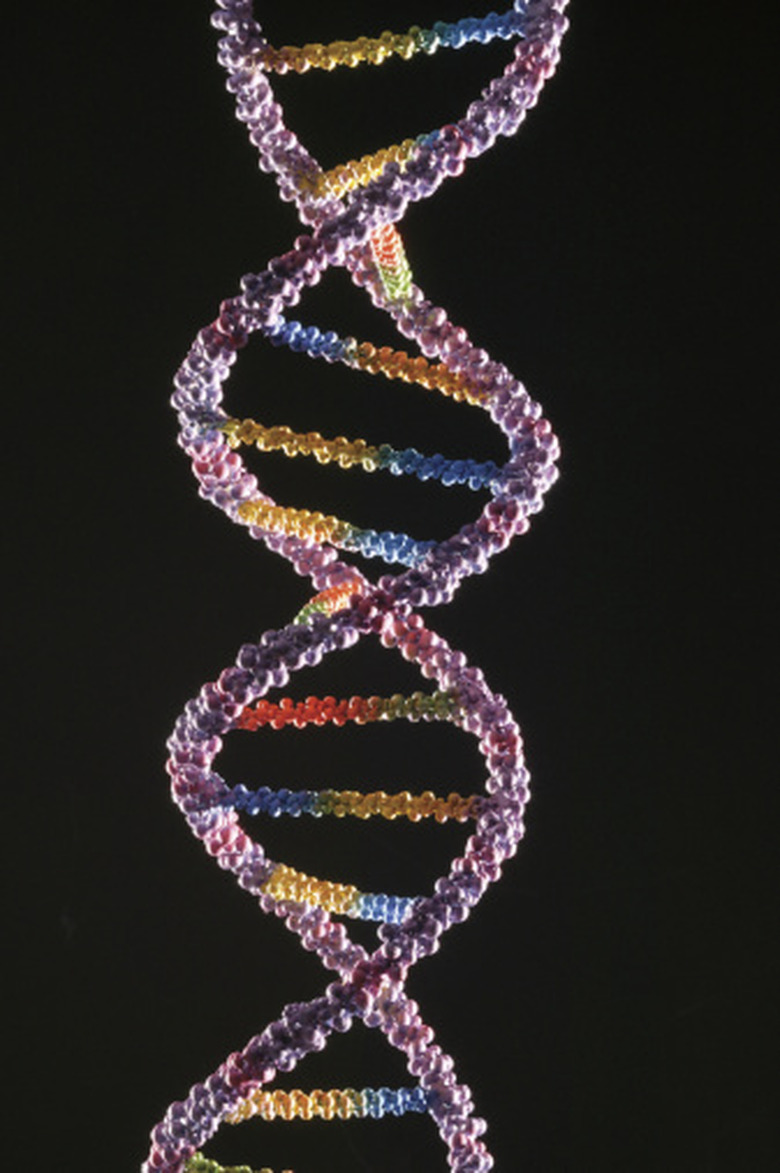Why Are There Many Different Types Of tRNA Molecules?
When genes are expressed into proteins, DNA is first transcribed into messenger RNA (mRNA), which is then translated by transfer RNA (tRNA) into a growing chain of amino acids called a polypeptide. Polypeptides are then processed and folded into functional proteins. The complex steps of translation require many different forms of tRNA in order to accommodate the multitudinous variations in the genetic code.
Nucleotides
Nucleotides
There are four nucleotides in DNA: adenine, guanine, cytosine and thymine. These nucleotides, also known as bases, are arranged in sets of three called codons. Because there are four amino acids that could comprise each of the three bases in a codon, there are 4^3 = 64 possible codons. Some codons code for the same amino acid, and so the actual number of tRNA molecules needed is less than 64. This redundancy in the genetic code is referred to as "wobble."
Amino Acids
Amino Acids
Each codon codes for one amino acid. It is the function of tRNA molecules to translate the genetic code from bases into amino acids. The tRNA molecules accomplish this by binding to a codon on one end of the tRNA and an amino acid on the other end. For this reason, a variety of tRNA molecules are needed in order to accommodate not only the variety of codons but also the different types of amino acids in the body. Humans typically use 20 different amino acids.
Stop Codons
Stop Codons
While most codons code for an amino acid, three specific codons trigger the end of polypeptide synthesis rather than coding for the next amino acid in the growing protein. There are three such codons, called stop codons: UAA, UAG and UGA. Thus, in addition to needing tRNA molecules to pair up with each amino acid, an organism needs other tRNA molecules to pair up with the stop codons.
Non-Standard Amino Acids
Non-Standard Amino Acids
In addition to the 20 standard amino acids, some organisms use additional amino acids. For example, the selenocysteine tRNA has a somewhat different structure than do other tRNAs. Selenocysteine tRNA initially pairs with serine, which is then converted to selenocysteine. Interestingly, UGA (one of the stop codons) codes for selenocysteine and so assistive molecules are needed to avoid halting protein synthesis when the cell's translation machinery reaches the selenocysteine codon.
Cite This Article
MLA
Tutor, Sly. "Why Are There Many Different Types Of tRNA Molecules?" sciencing.com, https://www.sciencing.com/there-different-types-trna-molecules-8395393/. 24 April 2017.
APA
Tutor, Sly. (2017, April 24). Why Are There Many Different Types Of tRNA Molecules?. sciencing.com. Retrieved from https://www.sciencing.com/there-different-types-trna-molecules-8395393/
Chicago
Tutor, Sly. Why Are There Many Different Types Of tRNA Molecules? last modified August 30, 2022. https://www.sciencing.com/there-different-types-trna-molecules-8395393/
